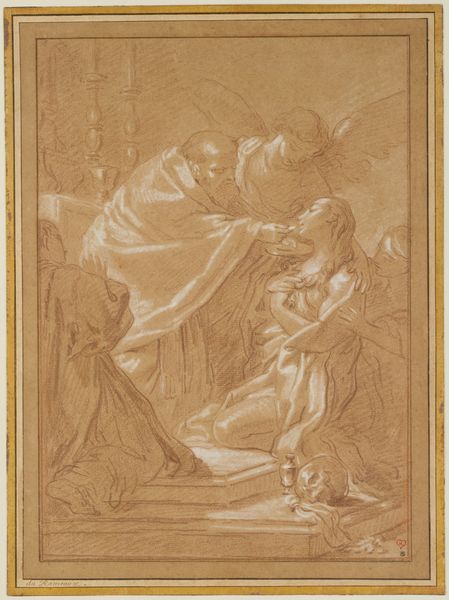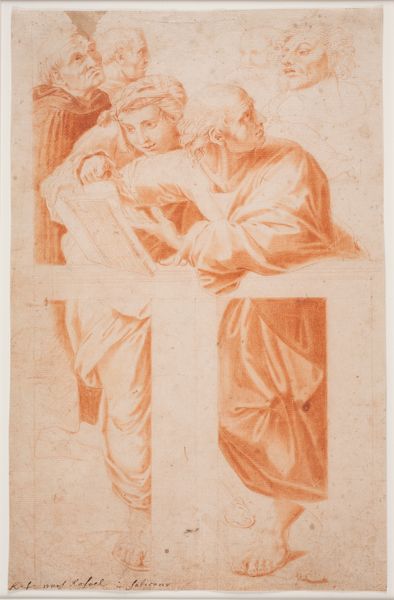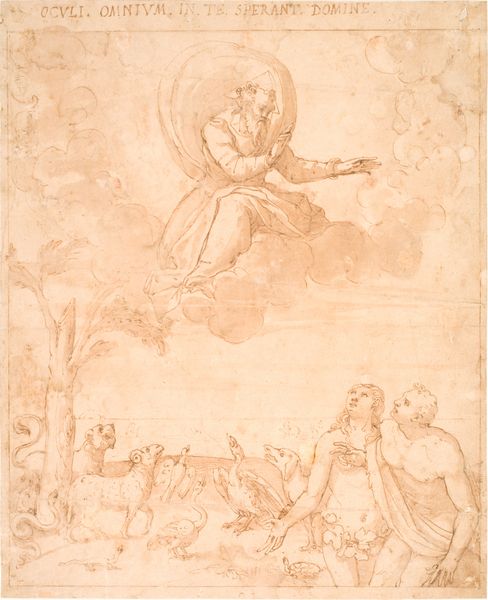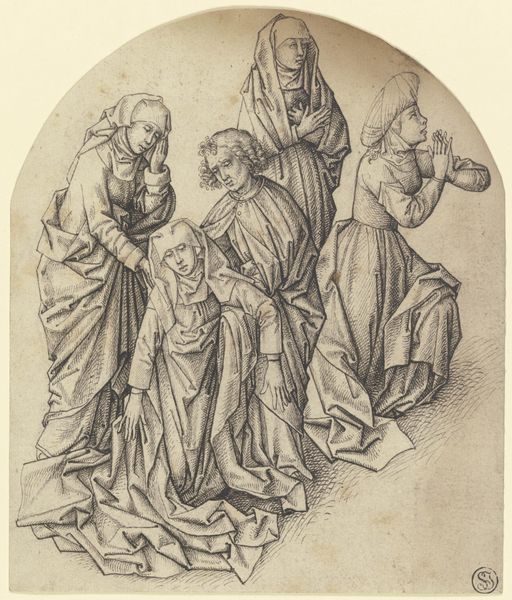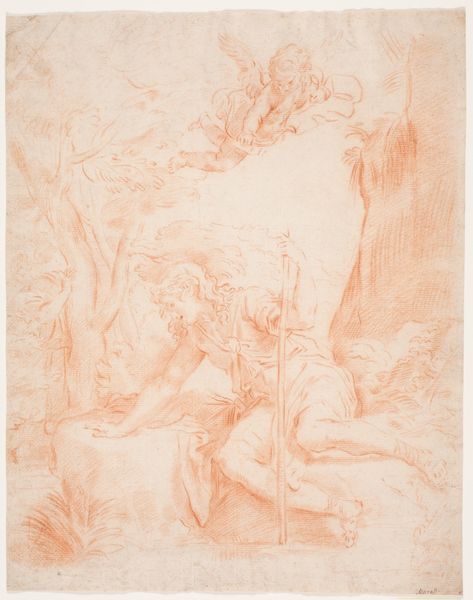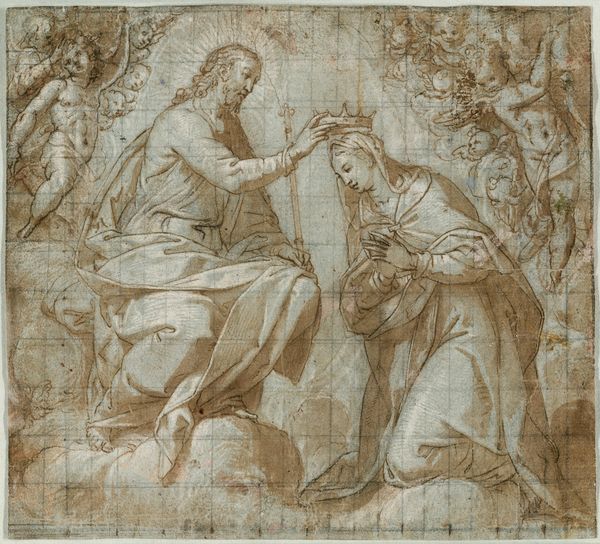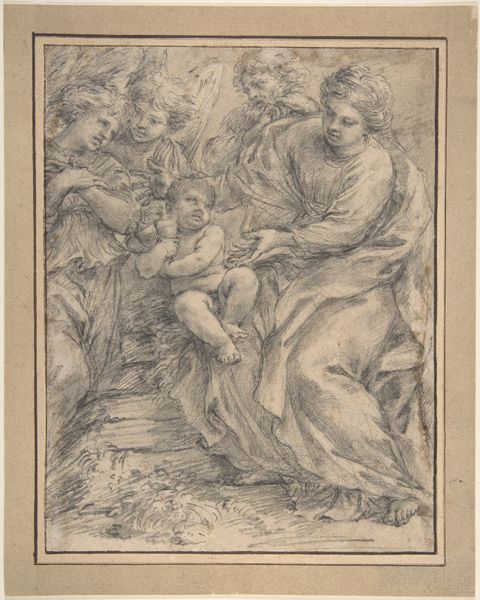
drawing, charcoal
#
drawing
#
baroque
#
charcoal drawing
#
figuration
#
charcoal
#
history-painting
Dimensions: 414 mm (height) x 273 mm (width) (bladmaal)
Editor: Here we have Hendrik Krock’s "Christ Handing the Keys to St. Peter", a charcoal drawing dating sometime between 1686 and 1738. It strikes me as incredibly reverent, capturing a pivotal moment with simple, flowing lines. What historical significance do you find embedded in this image? Curator: This drawing depicts a foundational narrative for the Catholic Church, imbuing Peter with the power to bind and loose on Earth. The act of handing over the keys visually represents the transfer of authority, shaping the church's hierarchical structure for centuries. The prevalence of this scene in Baroque art, wouldn't you say, points to its propagandistic function in a time of religious conflict and the Reformation? Editor: Absolutely. Seeing it framed that way makes the drawing feel less like a simple depiction and more like a visual argument. How did Krock's choice of medium - charcoal - play into this purpose? Curator: The use of charcoal allows for a dynamism in the lines and shadows, typical of Baroque sensibilities. Yet, it's still just a preliminary drawing. Think of the public impact this scene had when rendered in monumental frescoes or altarpieces in churches all over Europe. Do you think the intimacy of this drawing loses or gains something when it isn't as grand? Editor: I think the intimacy almost humanizes the figures. The subtle details, easily missed in a large fresco, now stand out, giving us a glimpse behind the institution and the power. Curator: Precisely. And that tension - the personal versus the political - is at the heart of understanding Baroque art's role in society. Thanks for that insight! Editor: And thank you for guiding me through the historical weight behind these sketched lines. It adds another layer of appreciation to Krock’s drawing.
Comments
No comments
Be the first to comment and join the conversation on the ultimate creative platform.
